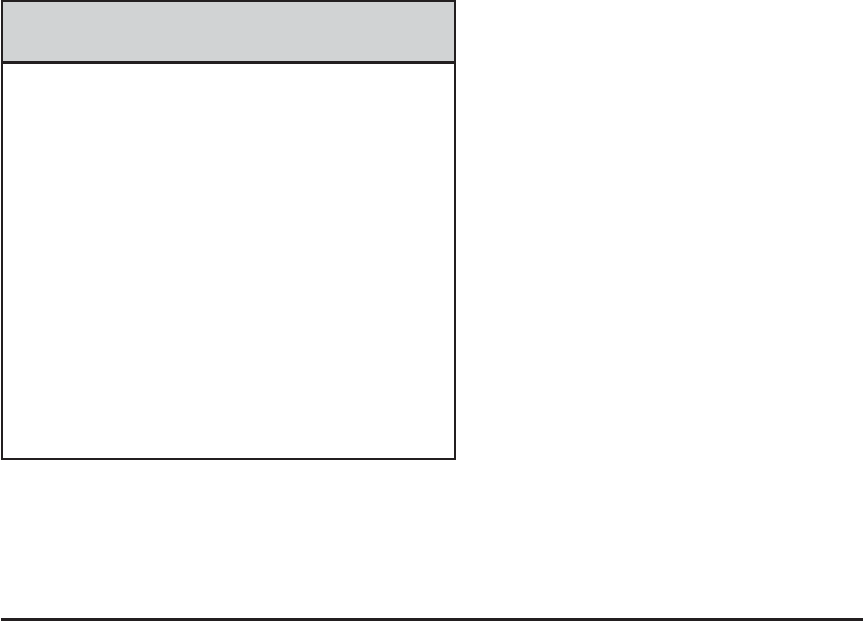
{CAUTION:
It is dangerous to get out of your vehicle
if the shift lever is not fully in PARK (P)
with the parking brake firmly set. Your
vehicle can roll.
Do not leave your vehicle when the engine
is running unless you have to. If you have
left the engine running, the vehicle can
move suddenly. You or others could be
injured. To be sure your vehicle will not
move, even when you are on fairly level
ground, always set your parking brake
and move the shift lever to PARK (P). See
Shifting Into Park (P) on page 122.Ifyou
are pulling a trailer, see Towing a Trailer
on page 357.
Make sure the shift lever is fully in PARK (P)
before starting the engine. Your vehicle has an
automatic transmission shift lock control system.
You must fully apply your regular brakes first and
then press the shift lever button before you
can shift from PARK (P) when the vehicle is
running. If you cannot shift out of PARK (P), ease
pressure on the shift lever and push the shift
lever all the way into PARK (P) as you maintain
brake application. Then press the shift lever button
and move the shift lever into another gear. See
Shifting Out of Park (P) on page 124.
Notice: Shifting to REVERSE (R) while your
vehicle is moving forward could damage
the transmission. The repairs would not be
covered by your warranty. Shift to
REVERSE (R) only after your vehicle is
stopped.
REVERSE (R): Use this gear to back up.
At low vehicle speeds, you can also use
REVERSE (R) to rock your vehicle back and forth
to get out of snow, ice, or sand without damaging
your transmission. See If Your Vehicle is Stuck
in Sand, Mud, Ice, or Snow on page 348 for
additional information.
117


















